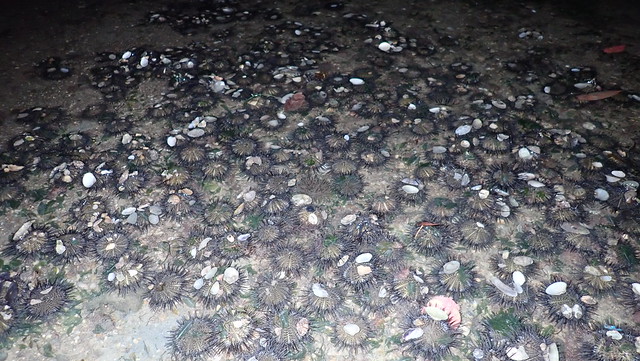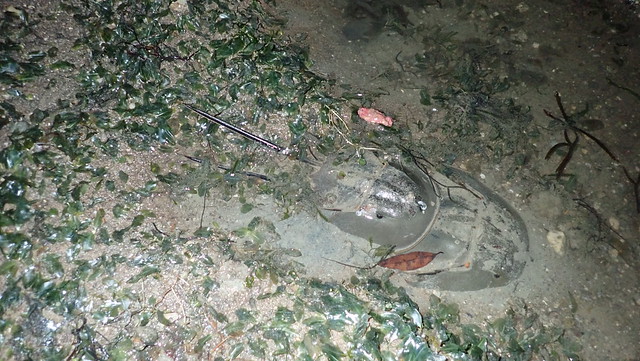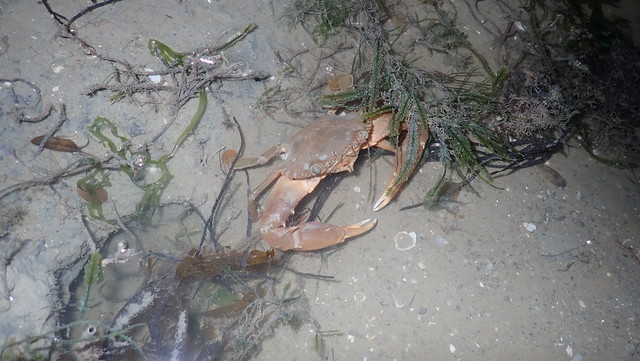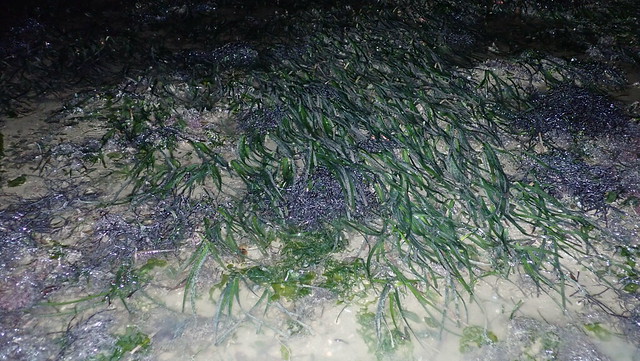My favourite Changi shore is still alive! Just last year, it was impacted by a 300-tonne oil spill in the East Johor Strait in Jan 2017 and a huge excavator was working on the shore in May 2017 removing large pipes.
Today, I was delighted to see lots of seagrasses including a patch of Smooth ribbon seagrass. And all the usual animals plus large clusters of Black sea urchins.
Changi is rich in echinoderms. As usual, colourful sea cucumbers were abundant on the shore. Mostly Pink warty sea cucumbers with many Thorny sea cucumbers. Also Sea apple sea cucumbers, Garlic sea cucumber, Ball sea cucumbers, Orange sea cucumbers. Plasticky sea cucumber appear to be more abundant now compared to my last survey in Nov 2017.
There remains lots of sea stars of all kinds too: There were many tiny to large Biscuit stars, a few small Cake stars, one tiny Eight-armed sea star, Painted sand stars and Plain sand stars. I saw one Common sea star and Marcus saw more. We saw these for the first time in Nov 2017. I also saw a few large White sea urchins.
Just as during our last survey in Aug 2017 and Nov 2017, there were lots of Blue feather stars! And a few Black-and-white feather stars.
There were lots of large Swimming anemones, many Big hermit hitching anemones. a few Tiger anemones, and one Haddon's carpet anemone. I saw one Common peachia anemone and one Striped sand anemone.
There were a few Common cerianthids some with Black phoronid worms, and some other kinds of cerianthids too.
There were many Sea Pencils, some Flowery sea pens, Spiky sea pens and Slender sea pens.
I saw a few tiny Ball flowery soft corals and a colony of what looks like flowery soft corals.
I saw 5 Mangrove horseshoe crabs, of which 2 were paired up.
Changi has lots of Big-head seagrass octopuses. Even though they are heavily harvested by fishermen to be used as bait. Although well camouflaged, the octopus often reveals its presence as it 'breathes'. This tiny one is hiding in a set of clam shells. This is why we should not take any shells home. Not just snail shells (which are used by hermit crabs) but also clam shells.
There were a few of these Swimming crabs which Marcus has identified as Charybdis anisodon. There were also many Flower crabs, most were heavily encrusted with barnacles.
There were small Penaeid prawns among the seagrasses, and I saw some clusters of egg strings laid by the Geographic sea hare. The rest of the team saw the sea hares.
The meadows were mostly Spoon seagrasses (large and small leaf blades). I also saw some Needle seagrass (narrow leaf blades). I didn't come across Fern seagrass. Kok Sheng spotted a patch of Smooth ribbon seagrass during our Jun 2016 survey. This morning, it was great to see a small patch of Smooth ribbon seagrass where the pipes used to be. But I didn't see dugong feeding trails today. We had seen such trails in Aug 2017. Today, there is a bloom of Scalpel seaweed (attached to the ground) plus what looks like Beehoon seaweed (which washed up in large amounts on the shore), with sprinkles of a variety of other seaweeds.
There were lots of Zebra corals on the small cluster of rocks on the shore. Most seemed alright except for a small patch. But there were not many sponges on the rocks today. There were lots of sponges here on my last survey in Nov 2017.
It's great to see that the shore remains lively.
Photos by others on this trip
By Sunny Tan
By Marcus Ng
By Nathaniel Soon














